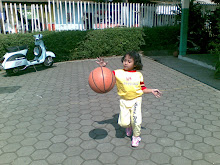Primary education is the first stage of compulsory education. It is preceded by pre-school or nursery education and is followed by secondary education. In North America this stage of education is usually known as elementary education.
In most countries, it is compulsory for children to receive primary education, though in many jurisdictions it is permissible for parents to provide it. The transition to secondary school or high school is somewhat arbitrary, but it generally occurs at about eleven or twelve years of age. Some educational systems have separate middle schools with the transition to the final stage of education taking place at around the age of fourteen.
The major goals of primary education are achieving basic literacy and numeracy amongst all pupils, as well as establishing foundations in science, geography, history and other social sciences. The relative priority of various areas, and the methods used to teach them, are an area of considerable political debate.
Typically, primary education is provided in schools, where the child will stay in steadily advancing classes until they complete it and move on to high school/secondary school. Children are usually placed in classes with one teacher who will be primarily responsible for their education and welfare for that year. This teacher may be assisted to varying degrees by specialist teachers in certain subject areas, often music or physical education. The continuity with a single teacher and the opportunity to build up a close relationship with the class is a notable feature of the primary education system.
Traditionally, various forms of corporal punishment have been an integral part of early education. Recently this practice has come under attack, and in many cases been outlawed, especially in Western countries.
A primary school
Elementary school in California
Elementary school in California, especially in the US the first stage of compulsory education is generally known as elementary education. It takes place in elementary schools which usually incorporate the first five grades and sometimes have a kindergarten. Elementary schools in the US are also known as grade schools or grammar schools. In some schools, teachers utilize a "looping system" where the same teacher teaches the same group of students for two years. For example, a third-grade class may have one teacher who would teach those students for an entire year, then that teacher would teach fourth-grade the next year, and thereby teach the same class again. The teacher would then revert back to the third grade the following year to start the process all over with a different group of students.
Over the past few decades, schools in the USA have been testing various arrangements which break from the one-teacher, one-class mould. Multi-age programmes, where children in different grades (e.g. Kindergarten through to second grade) share the same classroom and teachers, is one increasingly popular alternative to traditional elementary instruction. An alternative is that children might have a main class and go to another teacher's room for one subject, such as science, while the science teacher's main class will go to the other teacher's room for another subject, such as social studies. This could be called a two-teacher, two-class mould, or a rotation, similar to the concept of teams in junior high school. Another method is to have the children have one set of classroom teachers in the first half of the year, and a different set of classroom teachers in the second half of the year.
